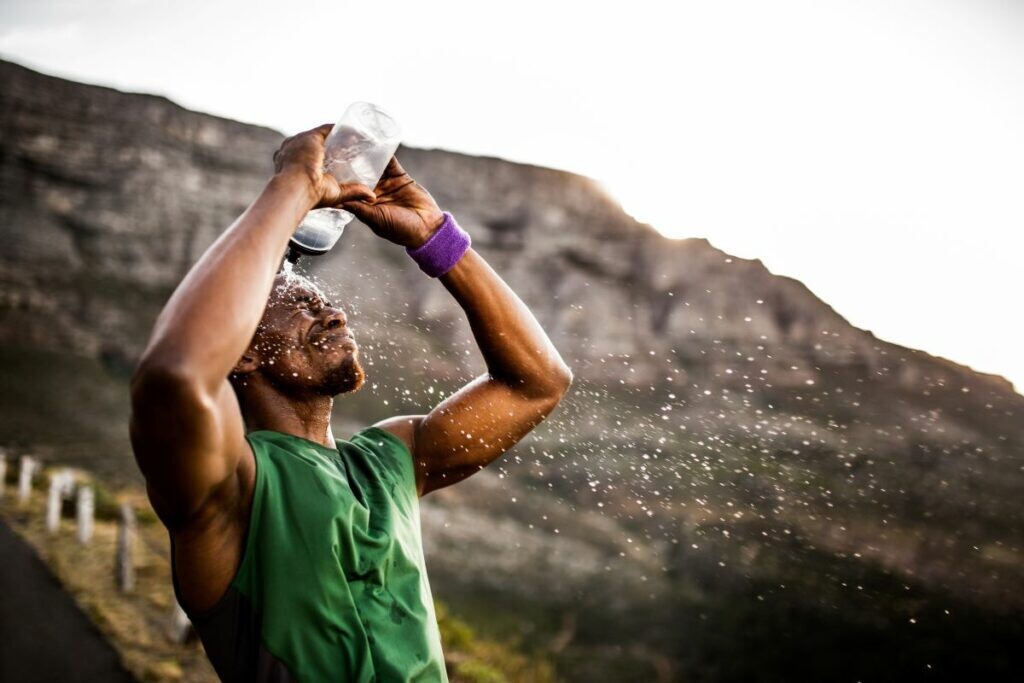Running News Daily
Running News Daily is edited by Bob Anderson. Send your news items to bob@mybestruns.com Advertising opportunities available. Train the Kenyan Way at KATA Kenya and Portugal owned and operated by Bob Anderson. Be sure to catch our movie A Long Run the movie KATA Running Camps and KATA Potato Farms - 31 now open in Kenya! https://kata.ke/
Index to Daily Posts · Sign Up For Updates · Run The World Feed
Why does humidity makes running harder?
If you’re heading out for an easy run in muggy weather and your heart rate is skyrocketing, don’t blame your fitness level. External factors like temperature and humidity are most likely impacting your running efficiency and performance.
Humidity, in particular, plays a crucial role in affecting your heart rate and perceived effort. Understanding how humidity influences your running can be essential for optimizing your training and making the most of running in hot, humid conditions.

Understanding humidity
Humidity is the amount of moisture (water vapour) in the air. When levels are high, the air is saturated with water vapour, making it harder for sweat to evaporate during exercise. This evaporation process is essential for regulating body temperature and optimizing performance. When sweat cannot evaporate efficiently, your body struggles to cool down, and your core temperature remains elevated. This means your heart has to work harder, pumping more blood to the skin’s surface to facilitate cooling through sweat evaporation.

This increased workload on the heart results in an elevated heart rate, even if your running pace remains unchanged. In other words, your heart has to beat faster to maintain adequate blood flow and temperature regulation, making running in high humidity more challenging.
Impact on running
It’s normal for your heart rate to be higher when you’re running in heat and humidity, but this can make running feel more strenuous and mean you feel fatigued earlier. If you’re training for a half-marathon or marathon and heading out for long runs in humid conditions, you might experience a phenomenon known as cardiac drift. This occurs when your heart rate gradually increases over the duration of a long run, even if your pace remains constant, making the effort feel harder over time.
To combat cardiac drift, start your runs well hydrated, and carry water with you. It’s also wise to avoid running too far from home, in case you run out of water. Many experienced marathoners tackle this by doing their long runs on a three- to five-kilometre loop, where they can set up a water station or access a water fountain. This ensures they have consistent access to water and can effectively manage their hydration.
Tips for managing humidity
Try to run during cooler times of the day, such as early morning or after sundown, when humidity levels are lower. Drink water during your run and wear cool, light, moisture-wicking clothing to help regulate your body temperature. If your heart rate remains elevated, consider slowing down the pace to allow your body to adapt to conditions. Training smart in humidity can pay dividends for fall road races.
Another approach is to leave the heart rate monitor behind and run by feel. These devices can sometimes do more harm than good by making you overly focused on numbers instead of tuning in to your body’s signals. Learn to listen to your body and pay attention to how you feel during your run. If you experience dizziness, nausea or excessive fatigue, stop running and seek water and a cooler (shaded) environment to recover.
By understanding how humidity affects your body and taking appropriate precautions, you can continue to enjoy the benefits of running while minimizing potential risks.
by Marley Dickison
Login to leave a comment




